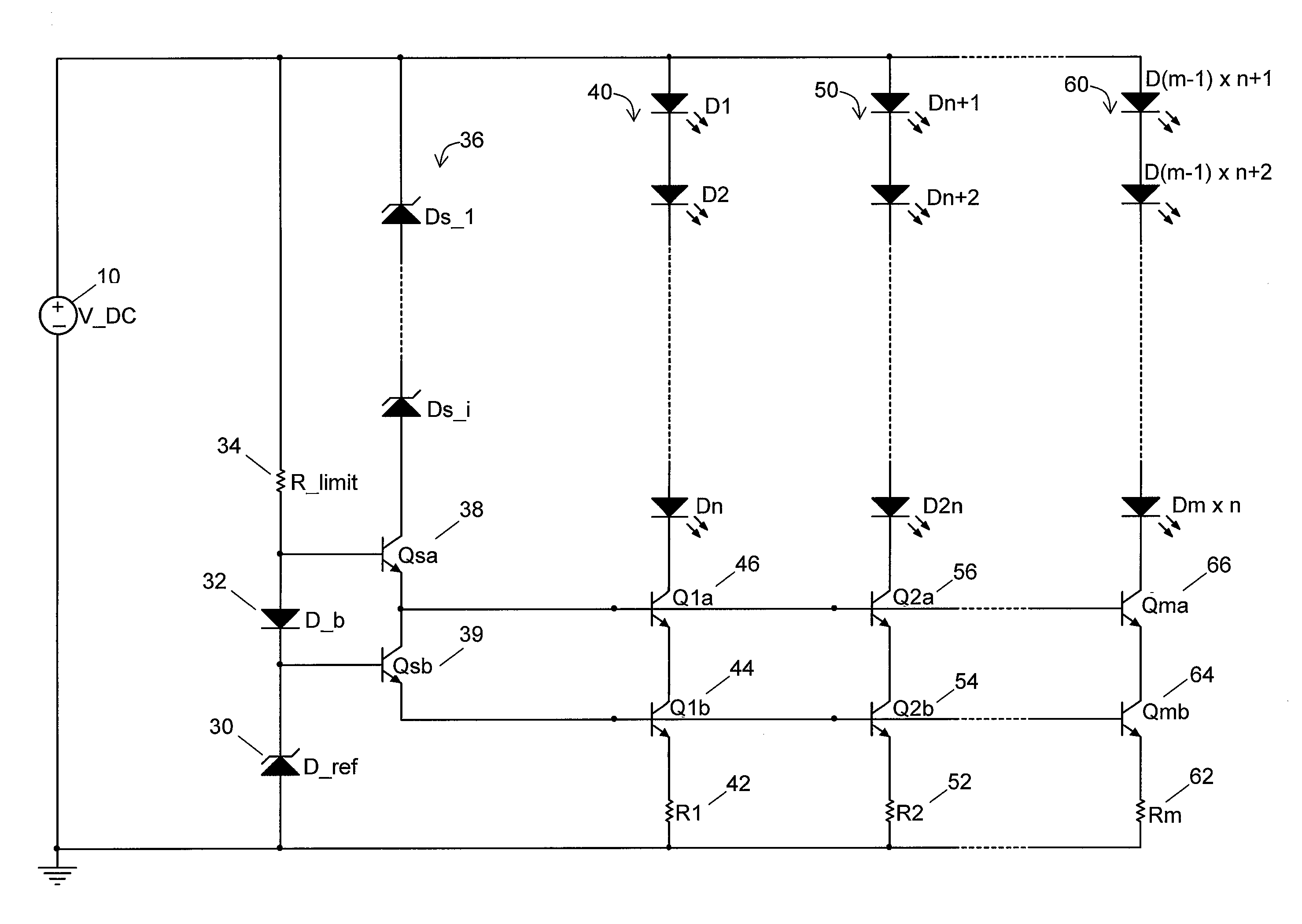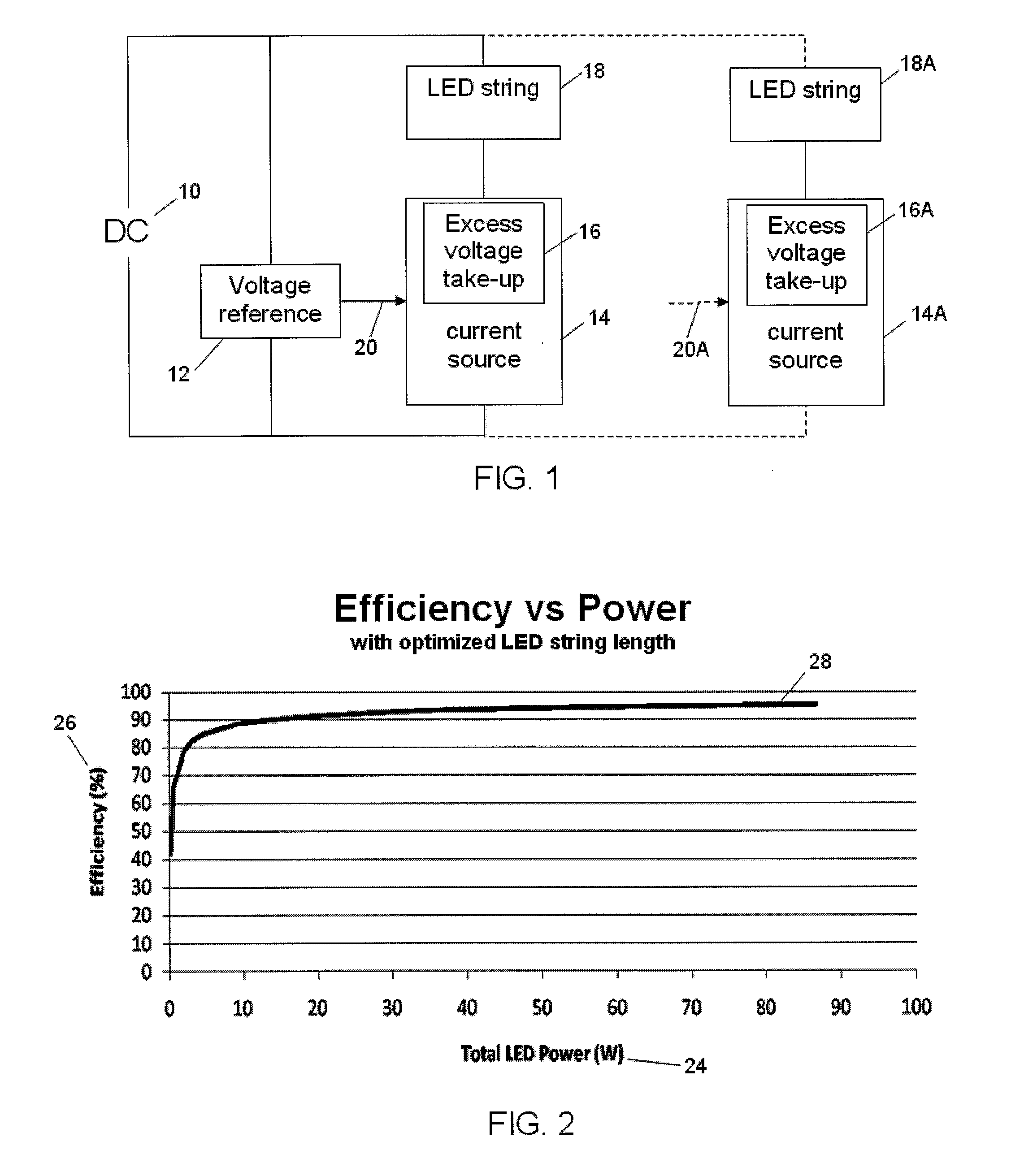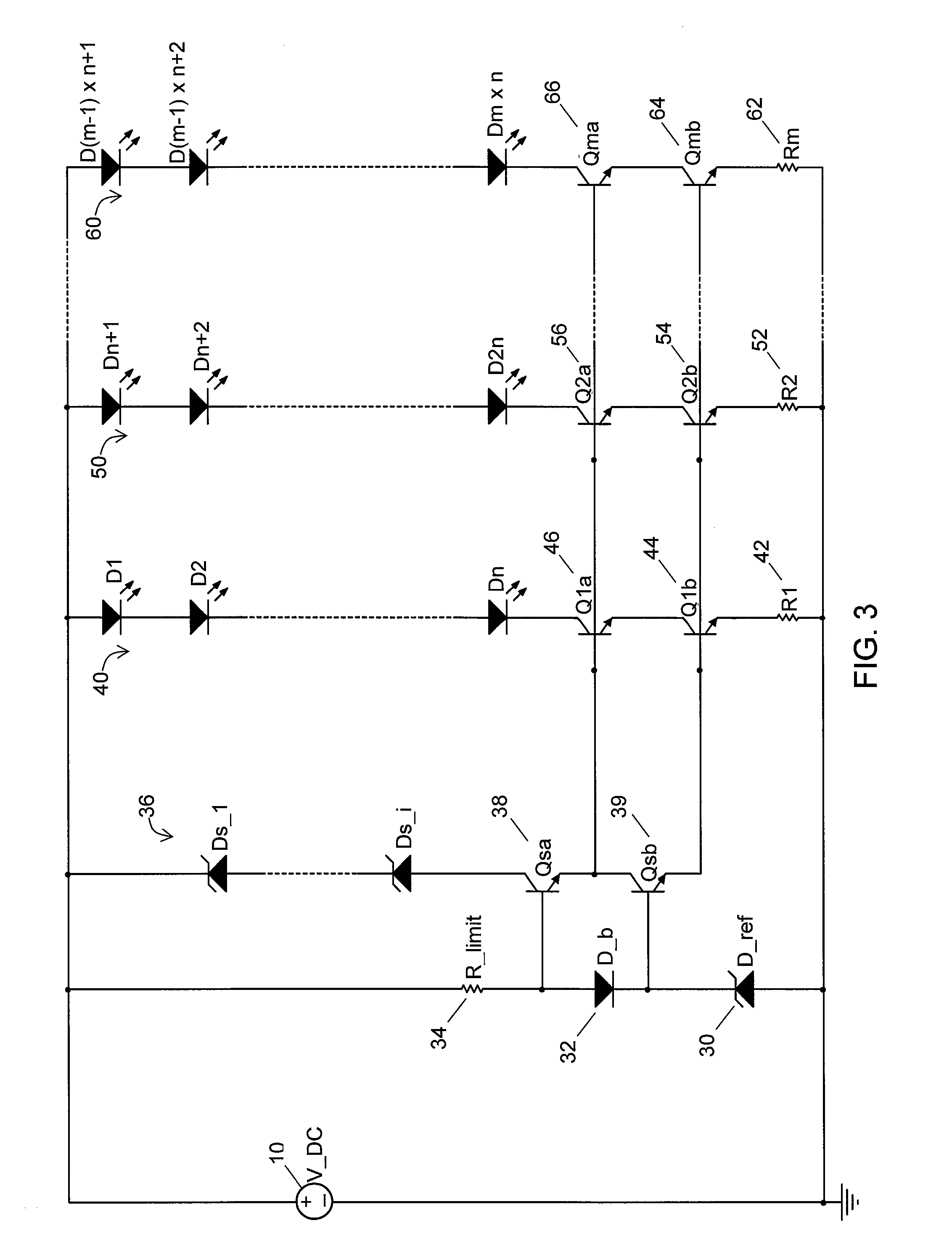Method and system for driving light emitting elements
a technology of light emitting elements and drive solutions, applied in the direction of electric variable regulation, process and machine control, instruments, etc., can solve the problems of inability to drive solutions suitable for driving higher power arrays of leds, and high initial cost of state of the art led devices, etc., to achieve accurate current control and low cost
- Summary
- Abstract
- Description
- Claims
- Application Information
AI Technical Summary
Benefits of technology
Problems solved by technology
Method used
Image
Examples
first embodiment
[0045
[0046]Referring again to FIG. 3, in a first exemplary embodiment of a light emitting element drive circuit of the present invention the voltage source V_DC 10 is a DC voltage supply. The zener diode D_ref 30 with zener voltage V(D_ref) establishes the reference voltage and hence the drive current for each LED string 40, 50, 60. The LED drive current in a given string is set to the desired level by current setting resistors R1 through Rm (42, 52, 62) according to the following relation:
I_LED=(V(D_ref)−2Vbe) / R
[0047]where R is the resistance of a given current setting resistor R1 through Rm 42, 52, 62 and Vbe is the base emitter voltage drop of transistor Qsb 39 and transistor Q1b 44, Q2b 54, Qmb 64 in each current source. If the values of resistors R1 through Rm 42, 52, 62 are equal, then the LED current through each string 40, 50, 60 will be essentially equal. To minimize the power loss in the current setting resistors 42, 52, 62, zener diode D_ref 30 should preferably be selec...
second embodiment
[0053]Digital Control
[0054]Referring now to FIG. 4, in a second exemplary embodiment of the light emitting element drive circuit of the present invention the current through all the LED strings 40, 50, 60 is controlled with a single digital control input 72. Transistor Qdim 70 is placed in parallel with zener diode D_ref 30, with a pull-down resistor 74 on its base where the digital control input 72 can be connected. As noted above, zener diode D_ref 30 establishes the biasing and voltage reference used by the current sources to set the current in the LED strings 40, 50, 60. By applying a positive voltage signal to the base of transistor Qdim 70 sufficient to turn it on and short zener D_ref 30 to ground, the reference voltage will be set to approximately 0V which will reduce the current through the LED strings 40, 50, 60 to approximately 0 mA, turning them off.
[0055]In a similar fashion, by pulsing the voltage signal to the base of transistor Qdim 70 the LEDs of strings 40, 50, 60 ...
third embodiment
[0057]Analog Control
[0058]Referring to FIG. 5, in a third exemplary embodiment of the light emitting element drive circuit of the present invention an analog control option is provided that uses a variable resistor 76 or variable resistance element such as a transistor controlled in its linear region in parallel with zener diode D_ref 30, instead of a switching element. By reducing the resistance of Rdim 76, the amount of current flowing through zener diode D_ref 30 can be reduced which will reduce the voltage reference and hence the level of current flowing through the LED strings 40, 50, 60. Since the V-I characteristic of the zener diode D_ref 30 is non-linear, using a linear dimming element such as a standard potentiometer will not result in linear dimming of the LED current. Therefore, to improve the ability to make fine and more predictable adjustment of the analog LED current level, it may be preferable to use a logarithmic potentiometer or similar non-linear dimming element ...
PUM
 Login to View More
Login to View More Abstract
Description
Claims
Application Information
 Login to View More
Login to View More - R&D
- Intellectual Property
- Life Sciences
- Materials
- Tech Scout
- Unparalleled Data Quality
- Higher Quality Content
- 60% Fewer Hallucinations
Browse by: Latest US Patents, China's latest patents, Technical Efficacy Thesaurus, Application Domain, Technology Topic, Popular Technical Reports.
© 2025 PatSnap. All rights reserved.Legal|Privacy policy|Modern Slavery Act Transparency Statement|Sitemap|About US| Contact US: help@patsnap.com



